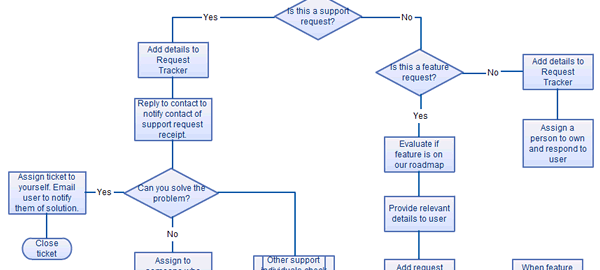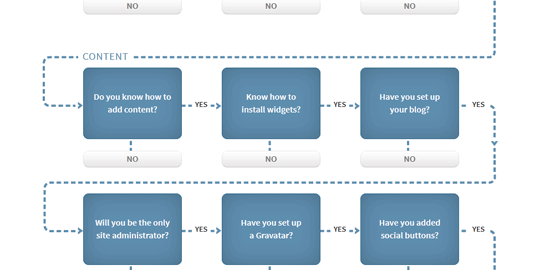Once you have identified your target audience and the competition, the next thing on your to-do list should be developing a marketing mix.
Every business needs its very own marketing mix to appeal to its customers. In this post, we will discuss the marketing mix definition, its importance, the elements of marketing mix and how to develop an effective marketing mix for your product or service.
For the ultimate list of marketing strategy planning tools with editable templates, you can click here or visit our Marketing Solutions
What is a Marketing Mix?
Marketing mix is a set of actions a business takes to build and market its product or service to its customers.
It helps to make sure that you are able to offer your customers the right product, at the right time and at the right place for the right price.
Whereas traditionally the marketing mix was executed through the 4 Ps of marketing, nowadays 3 more additional tools have been added to the mix, making it the 7 Ps of marketing. Businesses use a blend of these marketing mix elements to generate the response they want from their audience.
Importance of Marketing Mix
There are several benefits of the marketing mix that makes it important to businesses;
- Helps understand what your product or service can offer to your customers
- Helps plan a successful product offering
- Helps with planning, developing and executing effective marketing strategies
- Helps businesses make use of their strengths and avoid unnecessary costs
- Helps be proactive in the face of risks
- Help determine whether your product or service is suitable for your customers
- Helps identify and understand the requirements of customers
- Helps learn when and how to promote your product or service to your customers
What are the Elements of Marketing Mix
Developing the correct marketing mix for your product or service starts with understanding the Ps of Marketing.
The 4 Ps of Marketing Mix
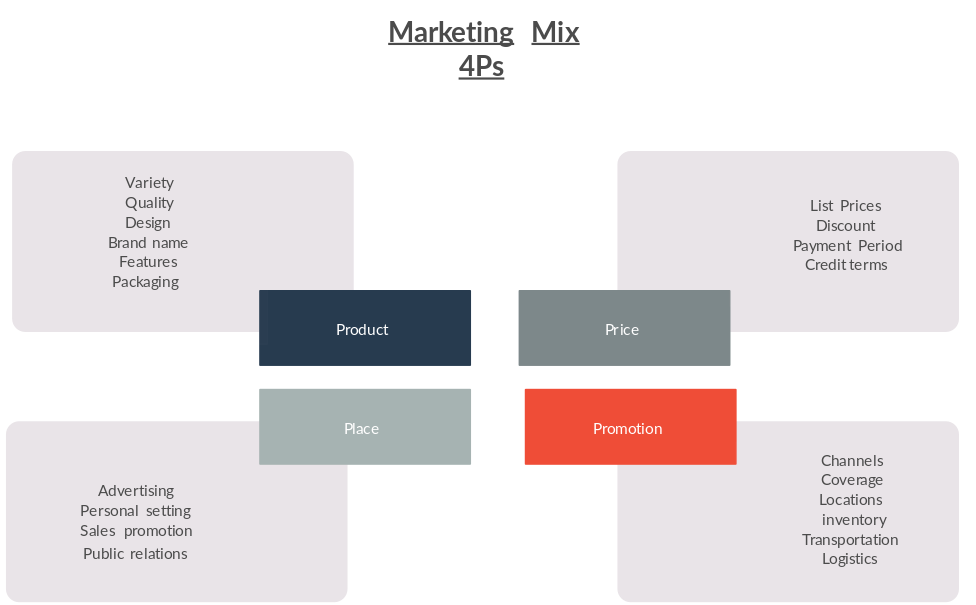
Product
Product is a good (such as music players, shoes etc.) or service (such as hotels, airlines, etc.) that is offered as a solution to satisfy the needs of your customer.
When developing the product, you need to consider its life cycle and plan for different challenges that may arise during the stages of it. Once the product reaches its final stage (sales decline phase), it’s time to reinvent the item to win the demand of the customers again.
Price
The next element of the marketing mix is the price your customer is willing to pay for your product. This helps determine the profit you will be able to generate.
When setting a price for your product, consider how much you have spent on producing it, the price ranges of your competitors, and the perceived product value.
Place
This is about the distribution center of the product and the methods used in distributing it to the customer.
Wherever this is, it should be easily accessible to the customer. For example, if you have a physical store, it should be located in a place that can be easily discovered by the customer. If you own a website to market your product, make sure it is easily navigable.
Promotion
Promotion refers to the methods a business uses to gain the attention of the customers to their product. These includes sales promotions, customer service, public relations, advertising etc.
When creating your promotion strategy, consider the tactics used by your competitors, the channels that are most effective in reaching your customers, and whether they match the perceived value of your product.
The AIDA model is a principle widely used in marketing and advertising. It describes the stages an individual goes through during the buying process to become a customer.
The 7 Ps of Marketing Mix
7 Ps of marketing mix is an extended, modified version of the 4 Ps of marketing. This model is widely used in the service industry. It adds 3 more elements to the 4 Ps discussed above.
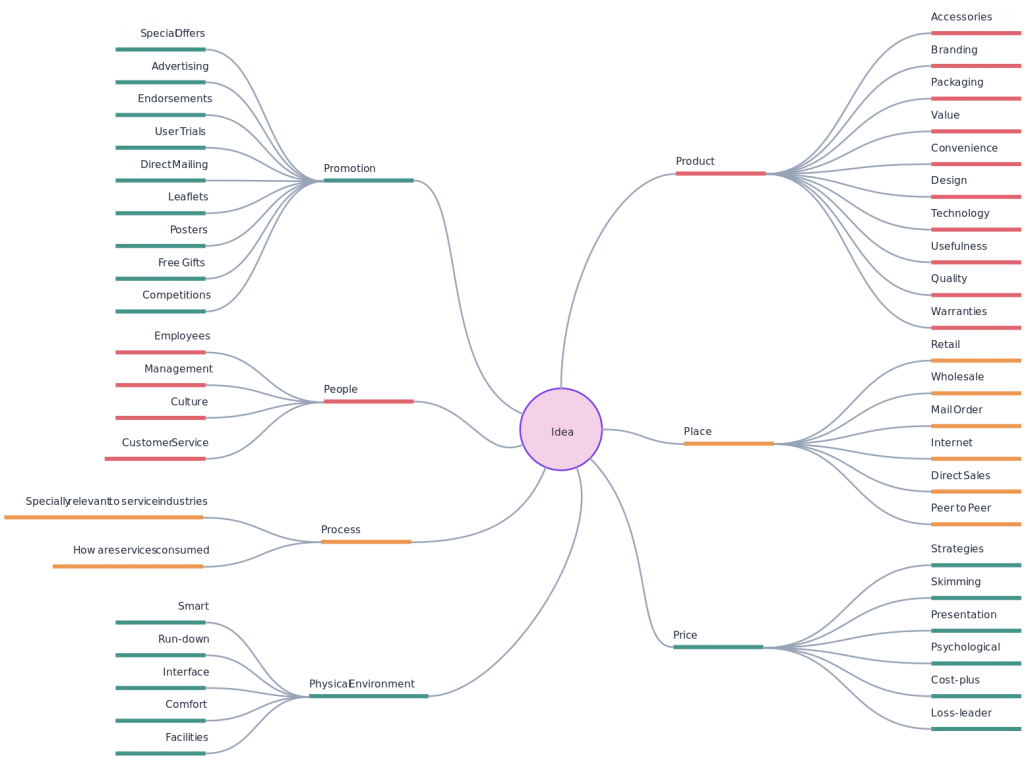
People
This refers to the people – both your customers and employees – who are directly related to the product or service.
While you need to study your target market to understand whether they are in need of the type of product you are offering, you need to hire the right people who are capable of giving their best to build it.
Process
Systems and processes play an important role in building and delivering a quality service to your customer.
Make sure that you process is free of bottlenecks and blockers in order to reduce the unnecessary expenses associated with executing the service.
You can use process maps to map process steps and analyze them to identify where you need to make improvements.

Physical Evidence
Physical evidence refers to what the customers see when consuming your product or service. This could include your branding, packaging, the physical environment where you are selling your product etc.
Make sure that all physical aspects associated with your product or service adhere to its values.
How to Develop a Marketing Mix
Define Your Goal and Set a Budget
Developing an effective marketing mix starts with setting the right goals. Establish what you want to achieve with your marketing plan; is it to grow sales? Acquire more customers? Build brand awareness?
Once you have set realistic and measurable goals, determine how much you are willing to spend on achieving your objectives.
Study Your Target Customer
In order to build a product or service that your customers would want to buy, you need to know who they are.
Find different segments in your target audience and create separate customer profiles for each. Refer to these when you are developing your strategies.
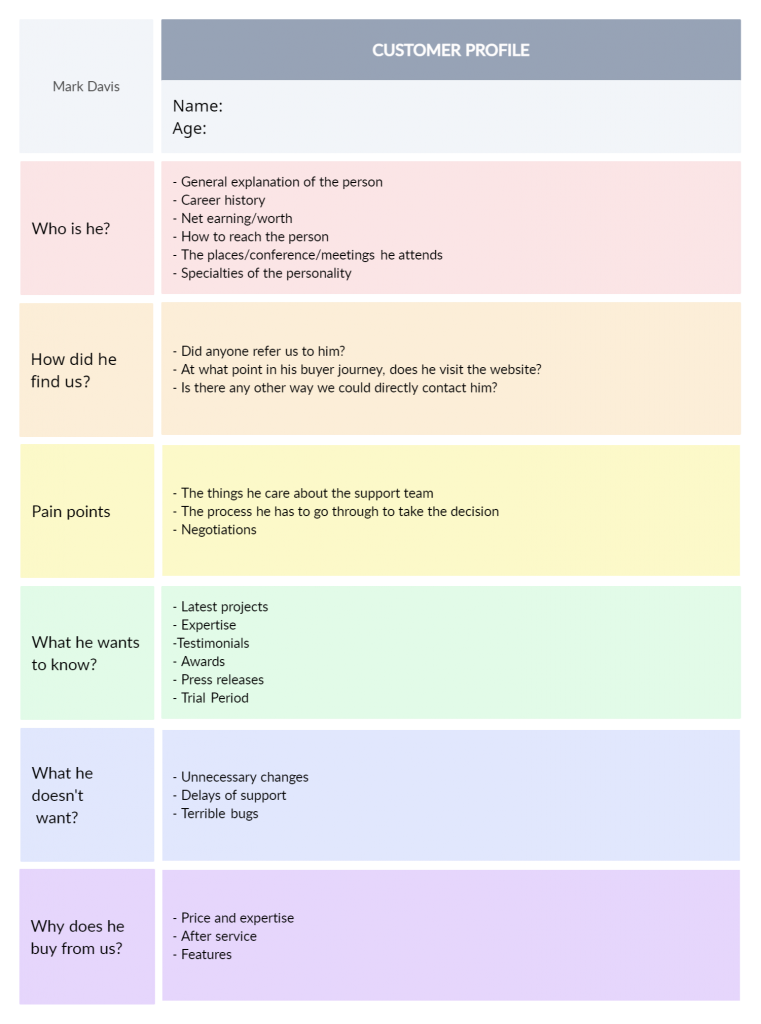
Identify Your Unique Selling Proposition
Clarify what your unique selling proposition is through customer surveys, interviews, focus groups etc.
Here you will identify the benefits your product or service will bring to your customer, and how you are better than anyone else in solving their problems.
Understand Your Competition
Carry out a competitor analysis to understand the different strategies and tactics used by your competitors. This knowledge will be especially helpful when you are creating your pricing strategy.
Record important information about your competitors on a competitor profile like the one below

Learn how to conduct an effective competitor analysis.
Identify the Unique Features of Your Product
List down the unique qualities and the value of your product. You can build on these when you are marketing it to your customers.
You can use the mind map below when you are identifying the unique features of your product.
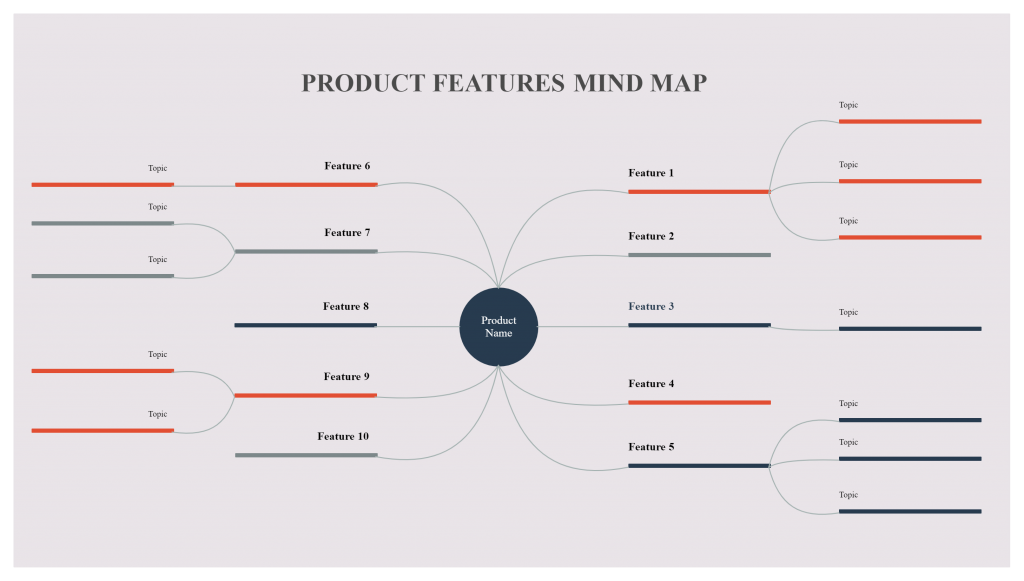
Create a Pricing Strategy
Using the competitor research you have done, build a pricing strategy. Make sure that you have not overpriced or underpriced your product.
Choose Your Distribution Channels & Promotional Methods
Choose the channels you will be distributing your product through based on the type of your product or service and your target customer.
And select the promotional techniques you want to choose based on your budget, and again the customer and your product.
Create your promotion campaign with this editable mind map template,
Edit the Promotional Campaign Template
What are Your Thoughts on Developing an Effective Marketing Mix?
We’ve covered everything you need to know about a marketing mix and developing an effective one for your business.
What are your experiences in selecting the correct marketing mix for your business? Share your thoughts with us in the comment section below.


